The McFarlane family farm run by Alwyn and Joanne McFarlane, along with Alwyn’s father Mervyn and their children John and Charlotte, was the host farm for the recent National Sheep Association Northern Ireland 2025 showcase.
The farm extends to 860 acres of hill and lowland ground, and supports a flock of 1,100 Mule ewes, 250 Lanark-type Scottish Blackface sheep, 300 replacements and a herd of 70 Limousin and Limousin x Belgian Blue-cross cows. A small flock of Border Leicester ewes is also bred by Joanne.
Performance in the lowland and hill flocks is impressive, with Mule ewes averaging in the region of 2.14 lambs per ewe mated across the last 10 years. Alwyn attributes three key factors as underpinning performance – a strong focus on animal health, utilising high-performing genetics and flock nutrition.
Mule ewes have traditionally been sourced in Scotland, with 300 replacements imported annually.
Alwyn comments: “I should be buying locally, but I have wanted to cut down on the health risk [from purchasing from numerous farms] and there was no other breed with those type of numbers that you could go in to one flock with 1,500 ewes and pick out 300 replacements with the breeding and health status you want.”

A selection of typical Lanark-type Scottish Blackface ewes. The greyer-faced ewe in the middle is eight years old.
With the bluetongue virus preventing imports from Scotland, the aim will be to source replacements from as low a number of sources as possible and with the genetics he desires.
The target on the farm is a large-framed Mule ewe capable of rearing fast-growing lambs and one which also offers a significant cull ewe value when eventually drafted from the flock.
There could be a temptation to breed Mule replacements from the Benbradagh hill flock, but Alwyn comments that this flock is more than capable of holding its own in terms of producing progeny that would rival Mule lambs, with surplus females and 10 to 15 breeding rams sold annually.
The flock gets its name from the Benbradagh hill on which they are run and which extends from 400ft above sea level to 1,100 feet. The hill is capable of sustaining a larger-framed ewe and, as such, there is a similar aim as with Mule ewes, in breeding a ewe with good size and scope.

Alwyn McFarland speaking at NSA Sheep 2025 hosted by his family.
Ewes need to be capable of thriving in the environment in which they are run, with the best-performing ewe lambs retained from good mothers and breeding lines doing the business on the farm.
Animal health
Alwyn explains that animal health is important from both the context of purchasing sheep and having a robust biosecurity plan in place and also to be in a position to market ewe lamb replacements with a given health status. Any female replacements purchased on to the farm remain as a separate group until after lambing and are only then interlinked with the main flock, while rams undergo a quarantine protocol.
We bought Mule gimmers [hoggets] last year and 11 of these went to the fat ring with OPA suspected. There was a big difference in purchase and sale value, but it was a small cost to protect the rest of the flock
Significant resources are invested in to exploring the cause of any health issue and implementing surveillance for other risks. He says that scanning for ovine pulmonary adenocarcinoma or OPA is now an annual practice in the flock following the identification of problems a few years ago.
The flock had issues with what they thought was a bad form of pneumonia, but after thoracic ultrasound scanning OPA was identified. Any ewes with suspect symptoms are culled on the premise that they are capable of delivering a value to the farm, and moving them off hopefully limits its spread.
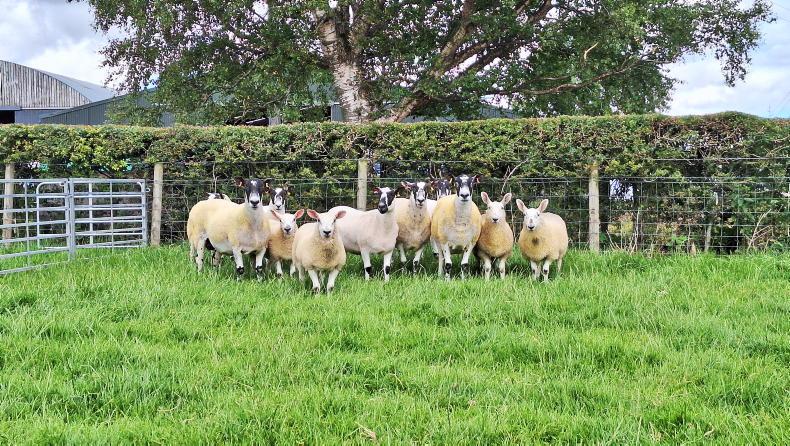
A selection of Mule ewes used for showing and their lambs.
“We bought Mule gimmers [hoggets] last year and 11 of these went to the fat ring with OPA suspected. There was a big difference in purchase and sale value, but it was a small cost to protect the rest of the flock.”
Alwyn adds that any sheep suspected of OPA in the future will be sent direct for slaughter to prevent any risk of ewes sold live through the cull ring being recycled.
All breeding sheep are also on a programme for enzootic abortion and toxoplasmosis. The decision came following blood testing after a high barren rate and lower litter size in the hill flock (140% compared to the norm of 170%) identified toxoplasmosis. Regular blood sampling also takes place to monitor mineral status.
Flock nutrition
Ewes lamb in two batches, with 400 Mule ewes lambing over a two-week period from 10 March and the remainder from 5 April. Ewes were all lambed outdoors in the past, but it now suits the system better to lamb indoors.
“My father is getting older, but can still do a large amount of work in the sheds, the dogs don’t work well for my wife and it is physically easier to lamb indoors than trying to be here, there and everywhere if lambing outside.”
All ewes are released outdoors once lambed. Feeding ceases at this stage, with a small number of batches having access to mineral buckets if deemed essential. The preference is not to use these if possible. Lambs from the first batch of 400 ewes are creep-fed from about four to five weeks of age to bolster performance. Later-born lambs receive no meal until after weaning, with male lambs finished with the aid of concentrate supplementation.

The small flock of Border Leicester ewes bred by Joanne McFarland.
Post-weaning, the focus is on maintaining condition in ewes in satisfactory condition and regaining condition in any ewes short of flesh.
“I’m really against slimming down ewes and restricting intake. I think a ewe needs her belly full and offering them lower-quality grass is a better bet. Hill grass satisfies that target and Mule ewes in good condition will go to the hill for a period along with Blackie ewes.”
There is also much more attention given to silage quality in recent years, with 35 to 40 acres of silage dedicated for ewes cut to maximise feed quality. Housed Mule ewes are fed with a diet feeder, which Alwyn is a big fan of, both from a point of view of labour and consistency of feeding.
Breeding focus
Ewes are all naturally mated – “I’m not a big fan of AI or flushing – I don’t preach to anyone, but I prefer natural breeding and a ewe rearing her own lambs.”
Showing is a considerable focus for the flock, with this providing a shop window for their produce and also satisfying a keen interest that all the family enjoys.
In the hill flock ewe longevity is a desirable trait, with ewes capable of thriving in their environment and managing on the hill a big goal. High levels of fertility and good growth rates are two other important breed characteristics, along with breeding functional ewes with a good body, skin and muscle, that will also be desirable to prospective customers.
Mule ewes have been mated with Texel ewes in the last two years, but Suffolk genetics are also used.
In excess of 90% of ewe lambs are sold as potential flock replacements, with a high level of repeat customers purchasing through breeding sales in Ballymena Mart and direct off the farm. The same metrics are also used in lowland breeding, along with rams which are balanced for lambing ease.
The McFarlane family farm run by Alwyn and Joanne McFarlane, along with Alwyn’s father Mervyn and their children John and Charlotte, was the host farm for the recent National Sheep Association Northern Ireland 2025 showcase.
The farm extends to 860 acres of hill and lowland ground, and supports a flock of 1,100 Mule ewes, 250 Lanark-type Scottish Blackface sheep, 300 replacements and a herd of 70 Limousin and Limousin x Belgian Blue-cross cows. A small flock of Border Leicester ewes is also bred by Joanne.
Performance in the lowland and hill flocks is impressive, with Mule ewes averaging in the region of 2.14 lambs per ewe mated across the last 10 years. Alwyn attributes three key factors as underpinning performance – a strong focus on animal health, utilising high-performing genetics and flock nutrition.
Mule ewes have traditionally been sourced in Scotland, with 300 replacements imported annually.
Alwyn comments: “I should be buying locally, but I have wanted to cut down on the health risk [from purchasing from numerous farms] and there was no other breed with those type of numbers that you could go in to one flock with 1,500 ewes and pick out 300 replacements with the breeding and health status you want.”

A selection of typical Lanark-type Scottish Blackface ewes. The greyer-faced ewe in the middle is eight years old.
With the bluetongue virus preventing imports from Scotland, the aim will be to source replacements from as low a number of sources as possible and with the genetics he desires.
The target on the farm is a large-framed Mule ewe capable of rearing fast-growing lambs and one which also offers a significant cull ewe value when eventually drafted from the flock.
There could be a temptation to breed Mule replacements from the Benbradagh hill flock, but Alwyn comments that this flock is more than capable of holding its own in terms of producing progeny that would rival Mule lambs, with surplus females and 10 to 15 breeding rams sold annually.
The flock gets its name from the Benbradagh hill on which they are run and which extends from 400ft above sea level to 1,100 feet. The hill is capable of sustaining a larger-framed ewe and, as such, there is a similar aim as with Mule ewes, in breeding a ewe with good size and scope.

Alwyn McFarland speaking at NSA Sheep 2025 hosted by his family.
Ewes need to be capable of thriving in the environment in which they are run, with the best-performing ewe lambs retained from good mothers and breeding lines doing the business on the farm.
Animal health
Alwyn explains that animal health is important from both the context of purchasing sheep and having a robust biosecurity plan in place and also to be in a position to market ewe lamb replacements with a given health status. Any female replacements purchased on to the farm remain as a separate group until after lambing and are only then interlinked with the main flock, while rams undergo a quarantine protocol.
We bought Mule gimmers [hoggets] last year and 11 of these went to the fat ring with OPA suspected. There was a big difference in purchase and sale value, but it was a small cost to protect the rest of the flock
Significant resources are invested in to exploring the cause of any health issue and implementing surveillance for other risks. He says that scanning for ovine pulmonary adenocarcinoma or OPA is now an annual practice in the flock following the identification of problems a few years ago.
The flock had issues with what they thought was a bad form of pneumonia, but after thoracic ultrasound scanning OPA was identified. Any ewes with suspect symptoms are culled on the premise that they are capable of delivering a value to the farm, and moving them off hopefully limits its spread.

A selection of Mule ewes used for showing and their lambs.
“We bought Mule gimmers [hoggets] last year and 11 of these went to the fat ring with OPA suspected. There was a big difference in purchase and sale value, but it was a small cost to protect the rest of the flock.”
Alwyn adds that any sheep suspected of OPA in the future will be sent direct for slaughter to prevent any risk of ewes sold live through the cull ring being recycled.
All breeding sheep are also on a programme for enzootic abortion and toxoplasmosis. The decision came following blood testing after a high barren rate and lower litter size in the hill flock (140% compared to the norm of 170%) identified toxoplasmosis. Regular blood sampling also takes place to monitor mineral status.
Flock nutrition
Ewes lamb in two batches, with 400 Mule ewes lambing over a two-week period from 10 March and the remainder from 5 April. Ewes were all lambed outdoors in the past, but it now suits the system better to lamb indoors.
“My father is getting older, but can still do a large amount of work in the sheds, the dogs don’t work well for my wife and it is physically easier to lamb indoors than trying to be here, there and everywhere if lambing outside.”
All ewes are released outdoors once lambed. Feeding ceases at this stage, with a small number of batches having access to mineral buckets if deemed essential. The preference is not to use these if possible. Lambs from the first batch of 400 ewes are creep-fed from about four to five weeks of age to bolster performance. Later-born lambs receive no meal until after weaning, with male lambs finished with the aid of concentrate supplementation.

The small flock of Border Leicester ewes bred by Joanne McFarland.
Post-weaning, the focus is on maintaining condition in ewes in satisfactory condition and regaining condition in any ewes short of flesh.
“I’m really against slimming down ewes and restricting intake. I think a ewe needs her belly full and offering them lower-quality grass is a better bet. Hill grass satisfies that target and Mule ewes in good condition will go to the hill for a period along with Blackie ewes.”
There is also much more attention given to silage quality in recent years, with 35 to 40 acres of silage dedicated for ewes cut to maximise feed quality. Housed Mule ewes are fed with a diet feeder, which Alwyn is a big fan of, both from a point of view of labour and consistency of feeding.
Breeding focus
Ewes are all naturally mated – “I’m not a big fan of AI or flushing – I don’t preach to anyone, but I prefer natural breeding and a ewe rearing her own lambs.”
Showing is a considerable focus for the flock, with this providing a shop window for their produce and also satisfying a keen interest that all the family enjoys.
In the hill flock ewe longevity is a desirable trait, with ewes capable of thriving in their environment and managing on the hill a big goal. High levels of fertility and good growth rates are two other important breed characteristics, along with breeding functional ewes with a good body, skin and muscle, that will also be desirable to prospective customers.
Mule ewes have been mated with Texel ewes in the last two years, but Suffolk genetics are also used.
In excess of 90% of ewe lambs are sold as potential flock replacements, with a high level of repeat customers purchasing through breeding sales in Ballymena Mart and direct off the farm. The same metrics are also used in lowland breeding, along with rams which are balanced for lambing ease.





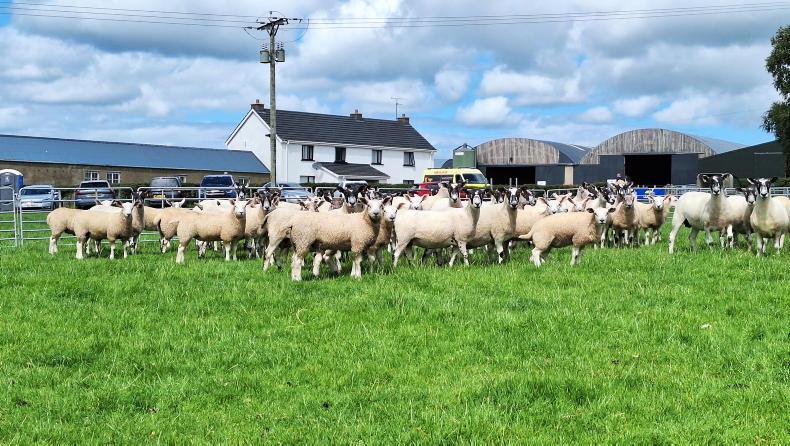




 This is a subscriber-only article
This is a subscriber-only article





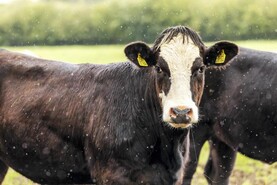
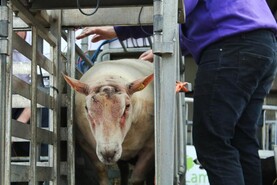

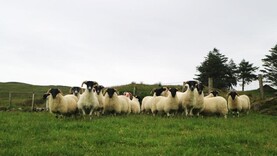
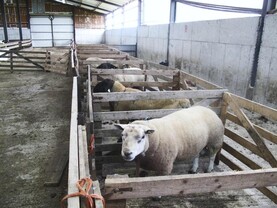
SHARING OPTIONS: